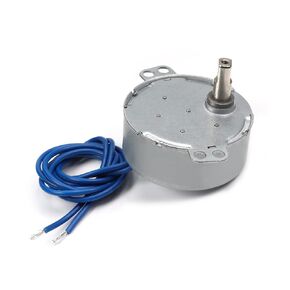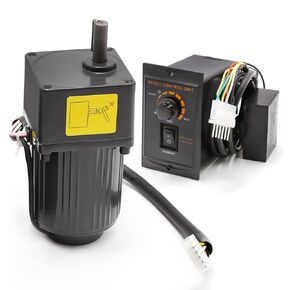- Shopping, made easy.
- /
- Get the app!
There are a number of reasons why a motor component may need to be replaced, and these are often closely related to the performance of the motor, its lifespan, and the environment in which it operates. Here are some common factors that cause motor components to need to be replaced.
Component Aging:
Over time, motor components such as windings, bearings, etc., may lose their original performance due to aging. For example, windings can age due to long periods of operation, resulting in increased resistance, reduced efficiency, and even short or open circuits.
Bearings can also be worn out due to long-term operation and poor lubrication, which in turn affects the normal operation of the motor.
Harsh operating environment:
If the motor is operated in harsh environments for a long time, such as high temperature, humidity, dust, etc., it may accelerate the damage of components. For example, a high-temperature environment can reduce the efficiency of the motor and make it more susceptible to heat up, which can accelerate the aging of the windings.
Dust and moisture can cause a short circuit or corrosion inside the motor, which can damage the motor components.
Improper use:
The motor may be damaged due to overload, undervoltage, overvoltage, etc. during use. For example, prolonged overload operation can cause the motor to overheat, which can damage the windings or bearings.
Improper operation and maintenance can also lead to damage to motor components. For example, failure to regularly clean the surface of the motor from dust and oil, or not to add lubricating oil as required, can lead to increased bearing wear.
Component Failure:
Motor components such as couplings, transmission belts, etc. may also need to be replaced due to failure. For example, a damaged coupling may cause an unstable connection between the motor and the load, which can affect the normal operation of the motor.
A broken drive belt can cause the motor to be unable to drive the load, which in turn affects the operation of the entire system.
Performance Improvement Requirements:
In some cases, higher performance components may need to be replaced in order to improve the performance of the motor or meet specific operational requirements. For example, in order to increase the speed or torque of a motor, it may be necessary to replace more powerful windings or bearings.
 DC Motor Controller X0530 30A 12V24V36V48V Motor Speed Control PWM Variable Speed Switch
KWD 0
DC Motor Controller X0530 30A 12V24V36V48V Motor Speed Control PWM Variable Speed Switch
KWD 0
 Mini Vibration Motor 140 Mini Vibration Motor DC 1.5-3V 5200RPM for Electric Toys Replacement - (5 Pcs)
KWD 4.500
Mini Vibration Motor 140 Mini Vibration Motor DC 1.5-3V 5200RPM for Electric Toys Replacement - (5 Pcs)
KWD 4.500
 Fielect Synchronous Motor AC 110V 2.5-3RPM Turntable Motor CW/CCW Direction 4W TYC-50 Double Flat Tapping Shaft
KWD 3.500
Fielect Synchronous Motor AC 110V 2.5-3RPM Turntable Motor CW/CCW Direction 4W TYC-50 Double Flat Tapping Shaft
KWD 3.500
 250W 5K 110V Adjustable Variable Gear Reducer Motor AC Gear Motor with Speed Controller for Industry 0-270RPM/min
KWD 59
250W 5K 110V Adjustable Variable Gear Reducer Motor AC Gear Motor with Speed Controller for Industry 0-270RPM/min
KWD 59